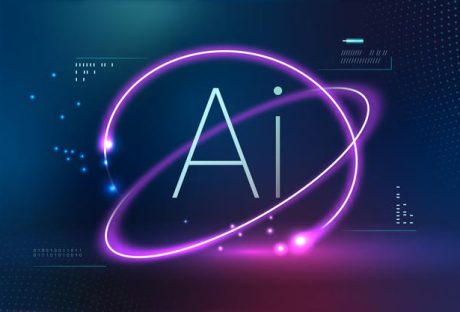Tag: AI

Artificial Intelligence in 2021 – How is that going to look?
We've seen multiple smart moves in artificial intelligence to this day. Robots have been driving processes in factories while driverless cars are poised to reach our roads in reality. Speech recognition has grown considerably and many gadgets have taken advantage of it. Companies are relying on AI to improve various products while machine learning is advancing faster than expected. Artificial Intelligence goes Mainstream Every interview at the Web Summit this year mentioned AI and 2021 will soon be expecting it to go mainstream. Facebook is boosting up its Messenger while incorporating artificial agents through’ technology which means consumers can rely on brands to order goods. AI is expected to augment capabilities with the help of multiple technologies, machine learning, semantic ontology, video analytics and the like. This convergence of new capabilities are bound to affect how people live and employees can change the way their jobs work. Microsoft is Gearing up for AI Microsoft predicts that 2021 is bound to be a fantastic year for artificial intelligence, that will affect the design industry in a big way. The emergence of new silicon architectures which can bear the brunt of machine learning is one of the pivotal reasons why AI will score high soon. One can expect natural and competent speech interactions with technological gadgets and even personal assistants like Cortana and Siri. AI is expected to help personal assistants to understand their tasks, compile research automatically and even understand the context of an email by adding it to the calendar. Some at Microsoft believe that conversation assistants are the future and keep us social, allowing humans to be inspired and motivated. According to reports, 90% of Microsoft research is wracking their brains on zero UI, indicating some major plays in the coming year. Deep Learning and AI replacing Workers According to analysts, one will witness a huge surge in Convolutional Neural Networks that is synonymous with deep learning since technology will be paired with significant computation resources. Pure information processing is what computers will be doing affecting people who are interacting with other people. Advent and Progress of Internet of Things (IoT) and Emotional Understanding More and more devices will be connected however disparate they may seem at the technology level driving an increase in smarter homes, cars, and nearly every other thing. Mined data can be potentially exploited in this regard. 2021 might even find AI detecting human emotions, working on the computers' ability to understand speech for hassle-free interaction between humans and computers. Cameras and facial recognition solutions are going to detect the emotional state while researchers will explore educational trends for treating depression, incorporate medical diagnoses to routine procedures in healthcare, and even boost overall customer service processes. AI in Shopping and Customer Service Businesses are figuring out the utility of artificial intelligence for affecting customers positively and wring out positive emotions. By assessing what drives them happy or unhappy, companies are using AI to help customers buy the perfect item at the perfect price point. Having a technology to understand what customers are feeling about shopping for some product will go a long way in driving future trends. Some of the biggest breakthroughs in artificial intelligence are through a platform race as to who is providing the best decision-making process that involves explaining, answering queries, and even representing data perfectly. Artificial Intelligence and Practical Ethics Ethical considerations should be at the crux of each research. When coming up with the concept of a driverless car, the car has to decide what action is essential if an animal comes on the road. Coding in this context will put a human life with an animal’s life and weigh in options. Problems are going to be more complex than they would seem. If a car is going to hit a pregnant woman, will the car decide on saving the driver’s life or the woman’s life? Such ethical problems will be posted in the deeper context in the near future and the answers are not so simple as they seem. There is a difference between human and machines and sex robots, for instance, will drive an asymmetrical relationship where there are no emotions on one side of the story. One might expect that the future might hold artificial avatars who will be acting like real people although their core could be modified. The Final Thoughts A diverse student base is required to fill in AI without any gender bias. One cannot have AI systems that take into perspective a single-gender or a single demographic group. The systems will be representing a generic population of various countries of the world. One cannot have a single city context or culture to dictate what the AI-based robots will be in the near future.
READ MOREDetails
World’s biggest chip will help train AI.
The tech world heard one of its biggest announcements, courtesy of Cerebral Systems. The Los Altos based tech manufacturer announced that created the world’s most powerful processor. In terms of comparisons, the Cerebras’s new processor is faster, stronger and bigger than anyone of its competitors, including Nvidia. Even though this was big news, the company did not stop there. Known for its hardware capabilities in Artificial Intelligence, it announced the creation of a specialized server for the chip, which would be solely directed at enabling, improving and building different AI capabilities and applications. The new chip from Cerebral has been titled as the ‘Wafer Scale Engine’. Just to give you a quick glimpse of its might and processing prowess, the company claims that in terms of mere comparisons, the WSE is nearly fifty-seven times mightier than Nvidia’s biggest offering. This means that the world has never seen a General Processing Unit (GPU) on the scale of the WSE. As the chip is expected to power strong AI-based applications, it boasts of 3000x on-chip memory capabilities. The new chip is expected to churn terabytes of data with ease. Its main application will be in cloud servers and large-scale SaaS businesses. Cerebral CEO, Andrew Feldman told Data Center Knowledge that the major applications of the new WSE chip will enable tech businesses to take their AI capabilities to the next level. The Founder of former chip company Sea Micro (Feldman sold the same to AMD for a record $334 Million in 2012) told the journal that this is the most revolutionary chip that has come out from any of the major manufacturers in recent times. Does size matter? Semiconductor companies of the world have spent decades developing ever tinier chips. These can be combined to create super-powerful processors, thus why create a standalone AI mega-chip? According to Cerebral, the answer is that hooking lots of small chips together creates delays that slow down training of AI models causing a vast industry bottleneck. The company’s chip binds 400,000 cores or parts that operate processing which is tightly linked to one another to speed up data-crunching. It can also transfer data between memory and processing extremely fast. Fault tolerance: But if this incredible chip is going to overcome the AI world, it will have to show that it can overcome some significant hurdles. One of these is in manufacturing. If contaminants sneak into a wafer being used to assemble lots of tiny chips, few of these may not be affected by impurity; but if there’s just one mega-chip on a cracker, the entire thing may have to be damaged severely. Cerebral alleges it’s found innovative ways to assure that contaminants won’t endanger a whole chip, but we don’t yet know if these will work in quantity production. Power play: Another difficulty is energy performance. AI chips are spectacularly power-hungry, which has both economic and environmental assumptions. Shifting data between lots of tiny AI chips is a massive power suck, so Cerebras should have an asset here. If it can help solve this energy challenge, then the startup’s chip could determine that for AI, big silicon is pretty. Cerebral has done its homework when it comes to the WSE. Before making the announcement, the company has already started working with some companies with regard to the chip’s AI capabilities. CEO Feldman was proud of the fact that the next-gen chip would be particularly helpful in enabling researchers in several fields including those studying neural networks to make the most of this next-gen technology. In other words, the impact of this chip for the next levels of human advancements would be huge, to say the least. The principal analyst of Tritias Research, Kevin Krewell stated that these are interesting and exciting times for the industry. With Cerebral pushing the boundaries of what is possible in chip development and advancement. Several technologies and studies, which were limited and curtailed till now, would be able to power through with the help of WSE chips.www.wordcounttool.com Read Also: How Artificial Intelligence Is Helping Banking And Financial Institutions? New Technologies And Consumer Protection 6 Software Technologies That Will Dominate 2018
READ MOREDetails















